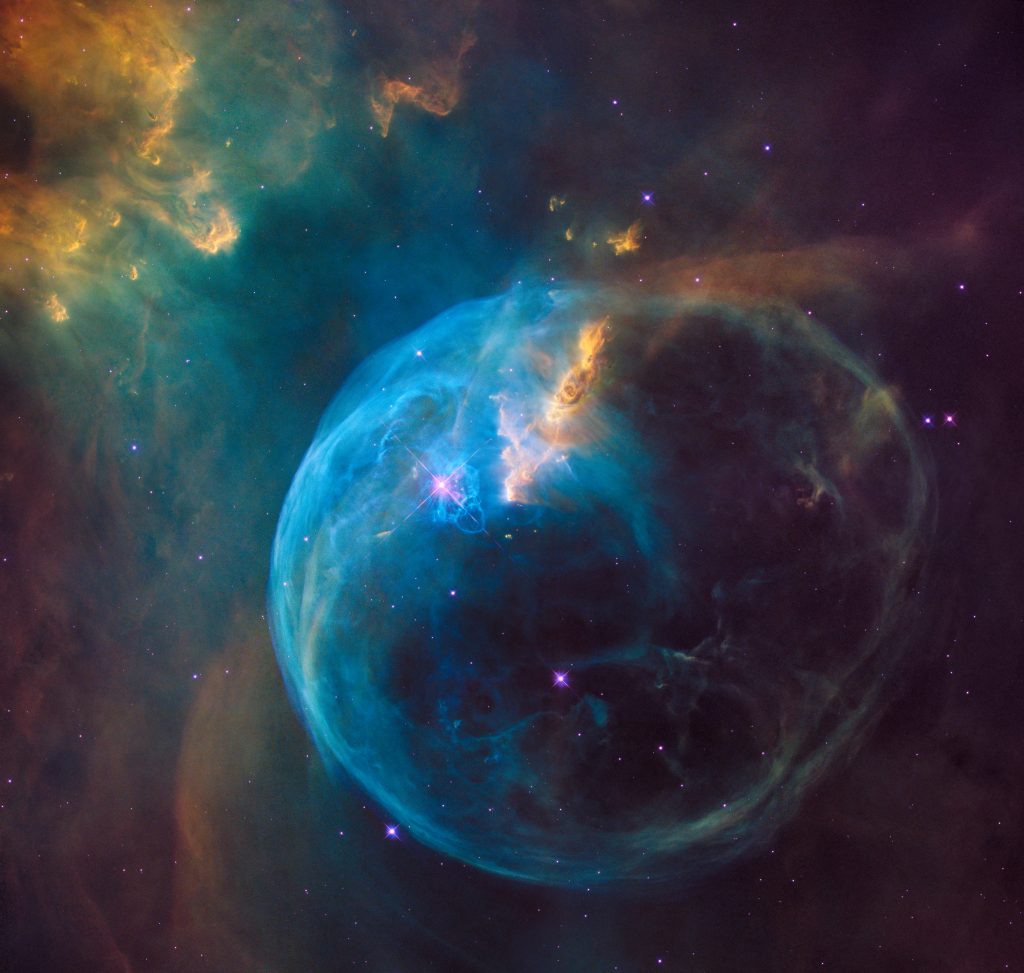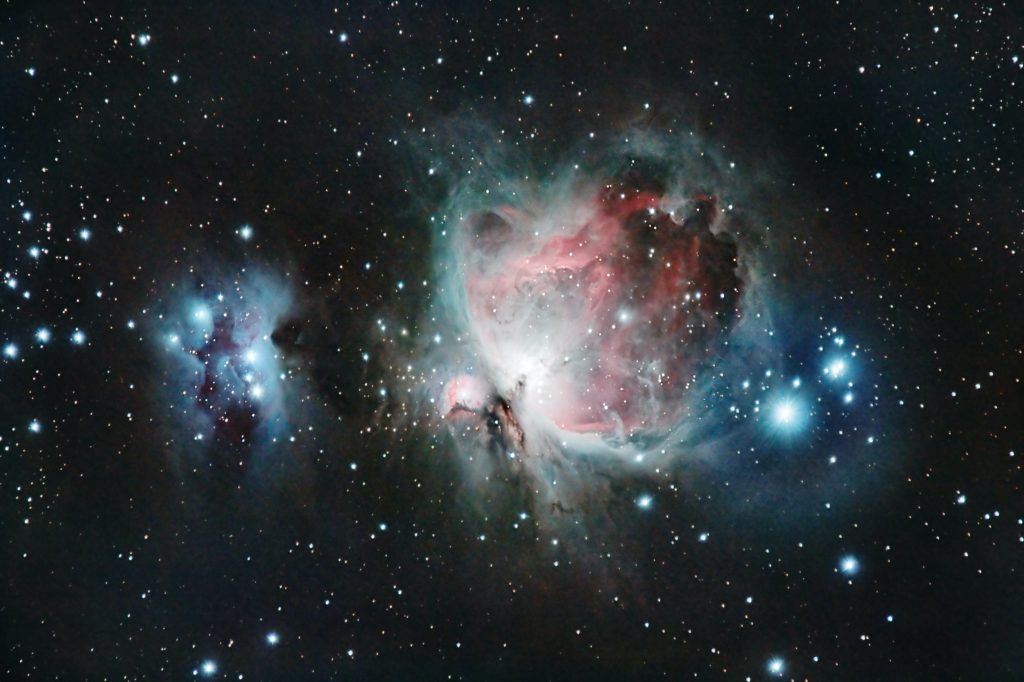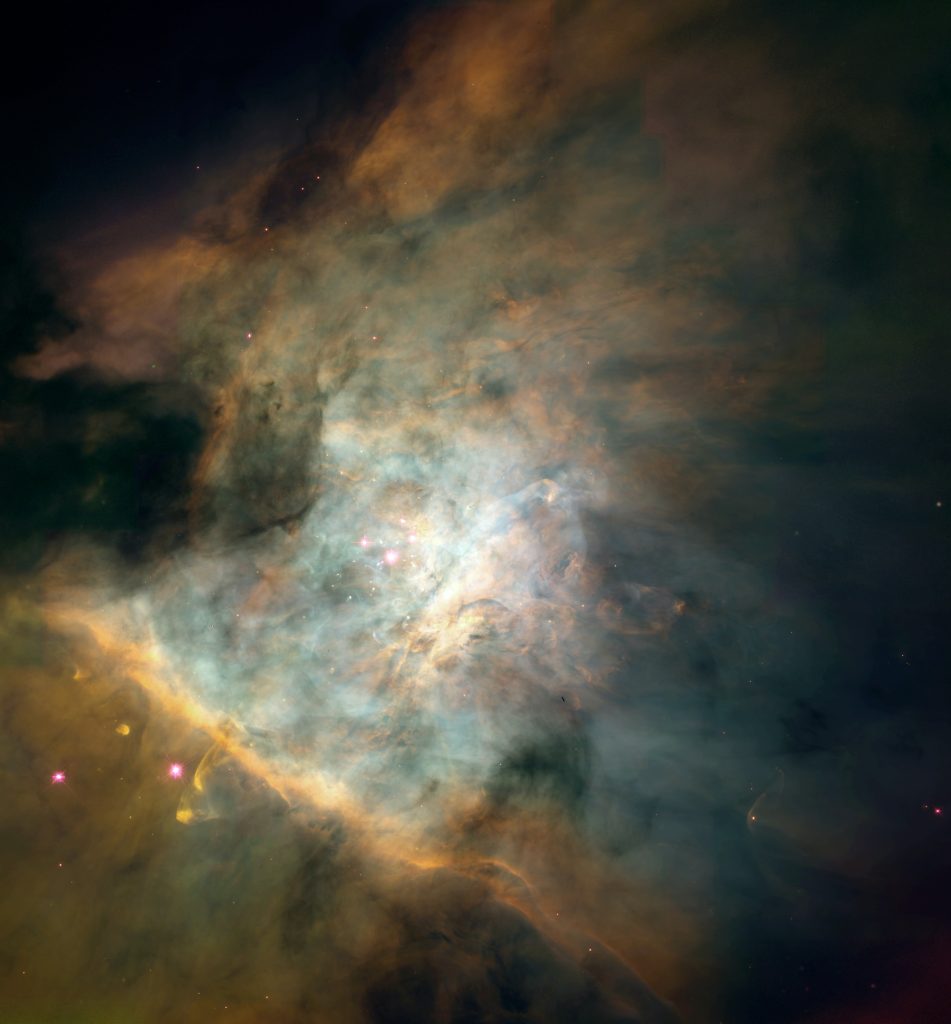Sure! You might be wondering if it’s possible to observe the Orion Nebula with a telescope. The good news is, yes, you can! The Orion Nebula is one of the most stunning celestial objects visible from Earth, and a telescope gives you the opportunity to get an up-close view of this captivating beauty. By peering through a telescope, you can witness the intricate details and ethereal colors that make the Orion Nebula so famous.
So, if you’ve got a telescope and a clear night sky, why not take a moment to direct your gaze towards the Orion Nebula? You’ll be treated to a breathtaking sight that will leave you in awe of the grandeur of the universe. Happy stargazing!

Equipment Requirements
Type of Telescope
To observe the Orion Nebula, you will need a telescope with a good balance of portability and power. There are three main types of telescopes to consider: refractor, reflector, and compound telescopes. Refractor telescopes use lenses to gather and focus light, while reflector telescopes use mirrors. Compound telescopes, such as Schmidt-Cassegrains, combine both lenses and mirrors. Each type has its own advantages and disadvantages, so choose the one that best suits your observing needs and budget.
Aperture Size
The aperture size of your telescope determines how much light can be gathered. A larger aperture allows for better light gathering and therefore a clearer and more detailed view of the Orion Nebula. Generally, a telescope with an aperture size of at least 4-6 inches is recommended for observing deep-sky objects like the Orion Nebula.
Magnification Power
The magnification power of a telescope is determined by the combination of the eyepiece used and the telescope’s focal length. It is important to find the right balance between magnification and image quality. Higher magnifications may result in a narrower field of view and a dimmer image. For observing the Orion Nebula, a moderate magnification power that allows for a wider field of view is usually preferred to capture the full beauty of this celestial wonder.
Location and Conditions
Light Pollution
Light pollution can greatly affect your ability to observe the Orion Nebula and other deep-sky objects. Find a location away from bright lights, such as cities and towns, to minimize the interference caused by light pollution. Dark sky areas, such as national parks or rural locations, provide the best conditions for observing the Orion Nebula.
Weather Conditions
Clear skies are essential for successful observation of the Orion Nebula. Check the weather forecast for your observing location and choose a night with minimal cloud cover. Additionally, avoid nights with high humidity, as this can cause poor visibility and affect the quality of your observations.
Altitude
The altitude of your observing location can influence the atmospheric conditions and turbulence, impacting the clarity of your view. Whenever possible, choose an observing spot at a higher altitude to minimize atmospheric disturbances and enhance your viewing experience.
Finding the Orion Nebula
Using Star Maps
Star maps are an invaluable tool for locating celestial objects such as the Orion Nebula. There are various star map applications available for smartphones and websites that can help you navigate the night sky. Familiarize yourself with the constellation patterns and use the star maps to guide you to the right area of the sky where the Orion Nebula is located.
Identifying the Orion Constellation
The Orion Nebula is located within the constellation of Orion, which is easily recognizable due to its distinct pattern of three bright stars forming Orion’s Belt. Take some time to familiarize yourself with the shape and position of the constellation in the night sky. Once you can easily identify Orion, it will be easier to locate the nebula within it.
Locating M42
The Orion Nebula, also known as Messier 42 (M42), is located in the “sword” of the Orion constellation, just below Orion’s Belt. Look for a hazy patch of light in that area, and you will have found the beautiful and awe-inspiring Orion Nebula.
Observing Techniques
Naked Eye Observation
Before using any equipment, start by observing the Orion Nebula with the naked eye. Take a few moments to let your eyes adjust to the darkness, and you will be able to see the faint glow of the nebula. This will give you a sense of its overall size and brightness before moving on to more detailed observations with binoculars or a telescope.
Binocular Observation
Binoculars can provide a wonderful viewing experience for observing the Orion Nebula. Their wide field of view allows you to take in the entire nebula in one glance. Use a tripod or stabilize your binoculars against a solid object to minimize hand-held shake and enhance image stability. Binoculars can offer a more immersive experience, with enhanced brightness and detail compared to naked eye observation.
Telescope Observation
When using a telescope to observe the Orion Nebula, start with a low magnification eyepiece to capture the entire nebula and its surrounding area. As you become more familiar with the nebula, try higher magnifications to explore its intricate details and structures. Experiment with different eyepieces to find the magnification that provides the best balance of clarity and field of view for your observing preferences.

Filters and Accessories
Light Pollution Filter
If you are observing from a location with significant light pollution, a light pollution filter can help improve your view of the Orion Nebula. These filters selectively block out the wavelengths of light produced by artificial lighting, allowing you to see more of the nebula’s delicate details and enhance contrast.
Nebula Filters
Nebula filters can enhance the visibility and detail of the Orion Nebula by selectively transmitting the wavelengths of light emitted by the nebula itself. These filters can help to bring out the intricate structures and textures within the nebula, revealing hidden details that are otherwise difficult to observe.
Eyepieces
Eyepieces are an essential accessory for any telescope observation. Different eyepieces offer varying magnifications and fields of view, allowing you to customize your viewing experience. Experiment with different eyepieces to find the combination that best suits your preferences and enhances your observation of the Orion Nebula.
Recommended Observing Times
Seasonal Visibility
The Orion Nebula is visible throughout the year, but the best time to observe it is typically during the winter months in the northern hemisphere. During this time, the constellation of Orion is high in the sky, providing optimal viewing conditions. However, the nebula can still be observed during other seasons, albeit at different altitudes and orientations.
Moon Phase Considerations
The presence of the Moon in the sky can impact your ability to observe the Orion Nebula. Moonlight can wash out the faint details of the nebula, making it less visible. For the best viewing experience, choose a night with a new Moon or when the Moon is at a crescent phase, ensuring minimal interference from moonlight.
Time of Night
The optimal time to observe the Orion Nebula is typically after midnight when the constellation of Orion is higher in the sky. This allows for a clearer view with less atmospheric interference. However, the nebula can still be observed earlier in the evening, especially during the winter months when Orion rises earlier.

Preparing for Observation
Getting Familiar with Equipment
Take some time to familiarize yourself with your telescope or binoculars before venturing out to observe the Orion Nebula. Learn how to operate the focus, change eyepieces, and align the telescope if necessary. This preparation will save you time and frustration when you’re ready to observe.
Aligning the Telescope
If you are using a telescope, it is important to properly align it before observing the Orion Nebula. Aligning involves pointing the telescope towards a known celestial object (such as a bright star) to ensure accurate tracking and positioning. Consult your telescope’s manual or online resources for specific instructions on aligning your particular telescope model.
Dressing Appropriately
Be sure to dress warmly when heading out for an observation session, especially during the winter months when the Orion Nebula is most visible. Even in milder weather, nighttime temperatures can still be quite cold. Layer up with warm clothing, wear a hat to retain body heat, and use thermal blankets or hand warmers to stay comfortable during extended observations.
Observation Tips
Adjusting Telescope Focus
To achieve the clearest view of the Orion Nebula, take the time to fine-tune the focus of your telescope. Adjust the focus knob slowly and patiently until the nebula appears sharp and well-defined. Small adjustments can make a significant difference in the clarity of the view, so be patient and take your time to find the perfect focus.
Allowing Eyes to Adapt to Darkness
One of the key factors in successful observation of the Orion Nebula is allowing your eyes to adapt to the darkness. When transitioning from a bright area to your observation spot, give your eyes at least 15-20 minutes to adjust. Avoid looking at bright lights or electronic screens during this time, as it will reset the adaptation process.
Taking Breaks
Observing the Orion Nebula can be a captivating experience, but remember to take regular breaks to rest your eyes and avoid eye strain. Stretch your legs, grab a warm drink, or simply admire the night sky without the aid of any equipment. This break will allow you to appreciate the beauty of the night sky as a whole and rejuvenate your eyes for more observations.
Sketching and Recording
Documenting Your Observations
Keeping a record of your observations allows you to track changes in the Orion Nebula over time and capture your personal observations. Consider starting a journal or using dedicated astronomy apps to log your observations, including details such as date, time, location, and observing conditions. This record will not only serve as a personal keepsake but also contribute to scientific research efforts.
Sketching Techniques
Sketching the Orion Nebula is a creative and rewarding way to document your observations and capture the intricate details. Start with the basic outline and then gradually add layers of features, such as the central Trapezium stars and the wispy tendrils of the nebula’s gas and dust. Remember, the goal is not to create a perfect piece of art but to convey the beauty and awe-inspiring nature of the nebula.
Note-taking
Supplement your sketches with notes about your observations. Write down your thoughts, impressions, and any notable details you notice in the Orion Nebula. Note-taking helps to solidify your observations and provides a comprehensive record to refer back to in the future.
Sharing and Discussing Observations
Astronomy Clubs and Societies
Joining local astronomy clubs or societies can provide a wealth of knowledge and opportunities to share and discuss your observations of the Orion Nebula. These organizations often host star parties or observing sessions where you can meet and learn from experienced astronomers. They can also provide guidance on equipment, observing techniques, and even assist you in finding the ideal observing locations.
Online Communities
Engaging with online communities dedicated to astronomy allows you to connect with fellow stargazers from all around the world. Share your observations of the Orion Nebula on forums, social media groups, or specialized astronomy websites. These platforms offer a great way to learn from others, ask questions, and exchange experiences with like-minded individuals.
Public Outreach
Consider getting involved in public outreach activities to share your passion for astronomy and the Orion Nebula with others. Participate in public stargazing events, give presentations, or volunteer at planetariums and observatories. Sharing your observations with a wider audience not only spreads awareness and appreciation for the wonders of the universe but also helps inspire the next generation of astronomers.
In conclusion, observing the Orion Nebula with a telescope can be a deeply rewarding experience. By understanding the equipment requirements, choosing the right observing location and conditions, and utilizing proper observing techniques, you can unlock the mesmerizing beauty and intricacy of this celestial wonder. Take the time to appreciate the scale and complexity of the nebula, document your observations, and share them with others. The Orion Nebula invites you to embark on an unforgettable journey through the vastness of our universe. Happy observing!











